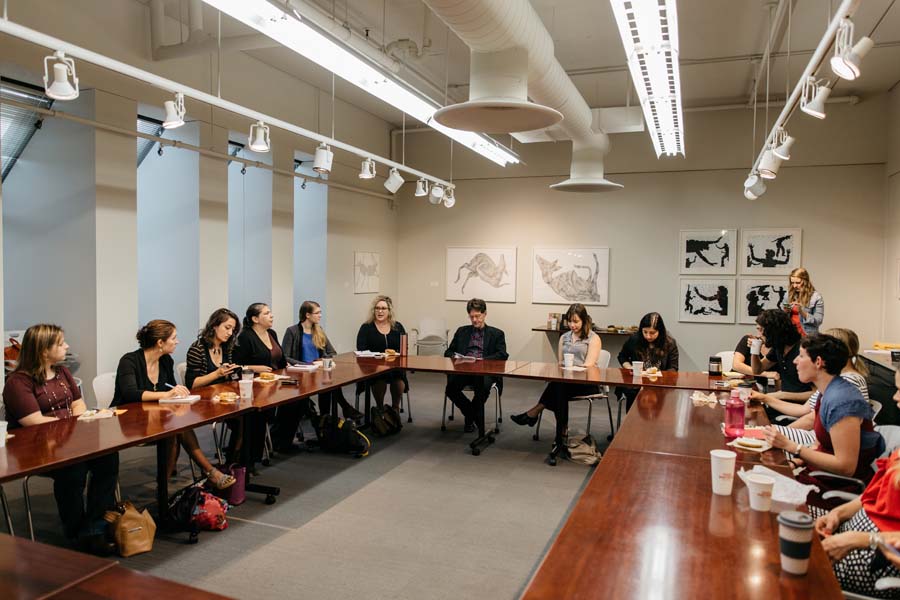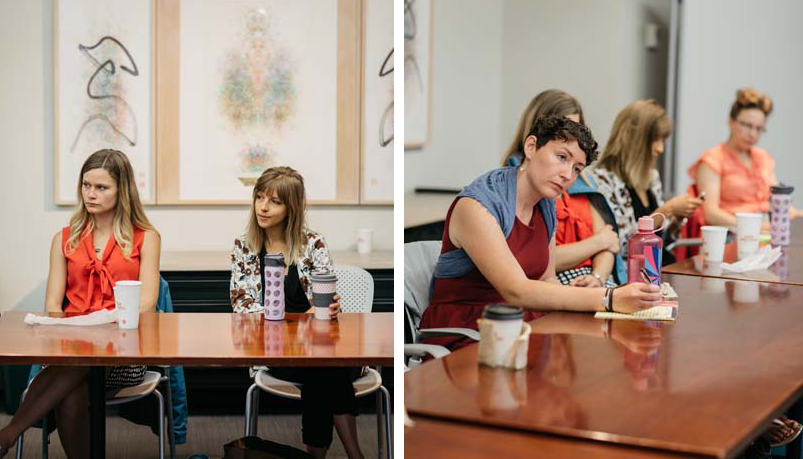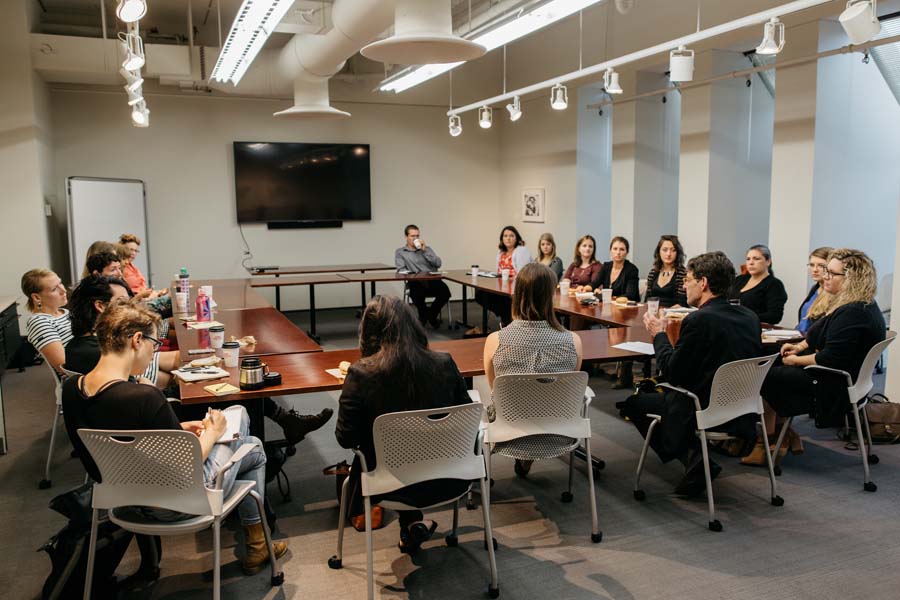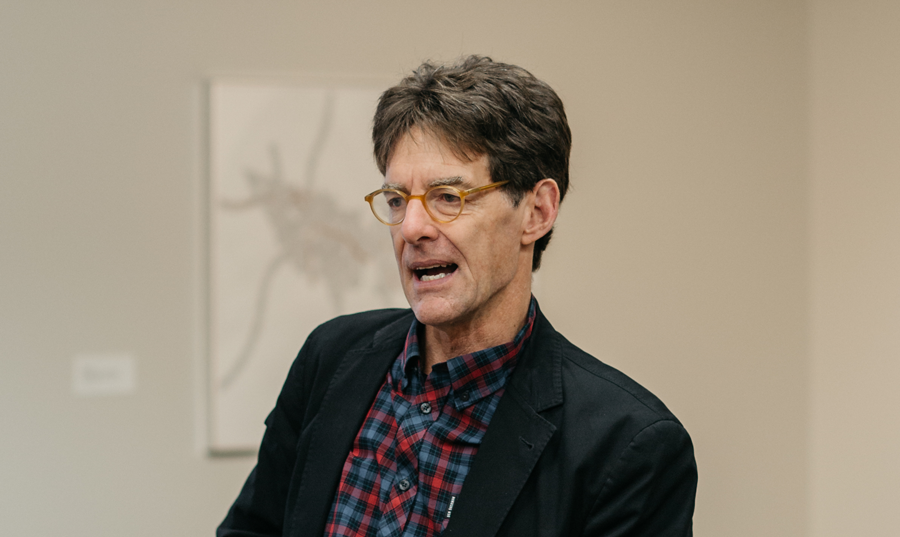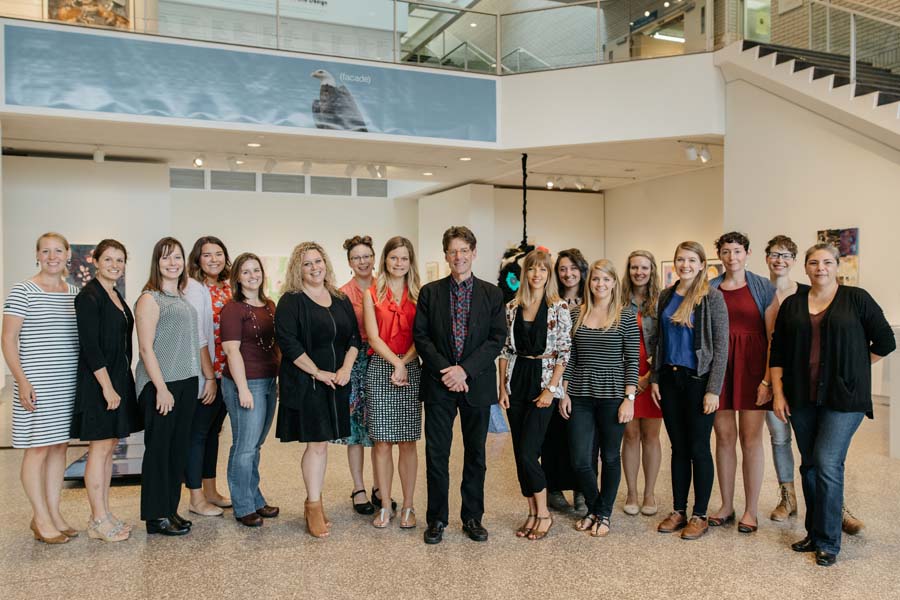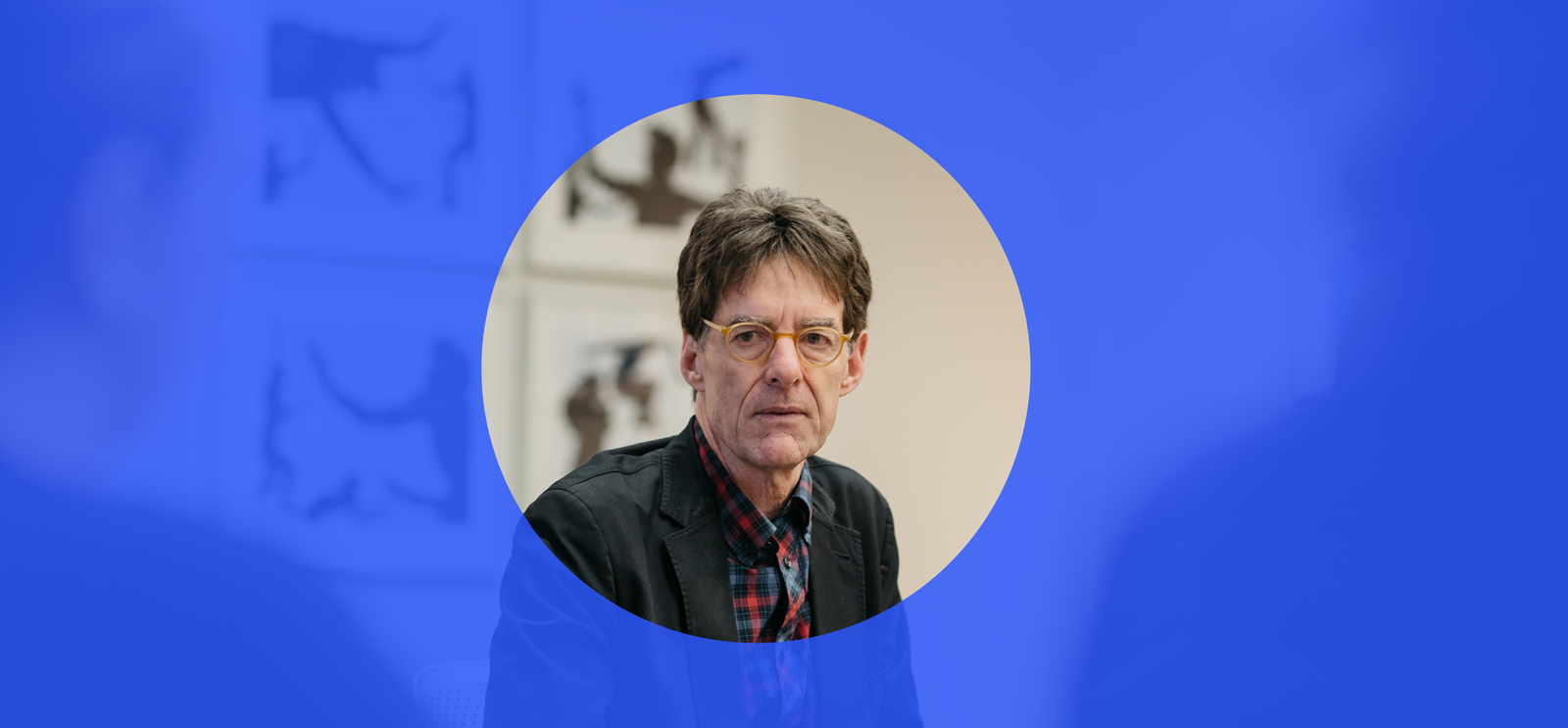
Words by Meher Khan | Photos by Josh Olson
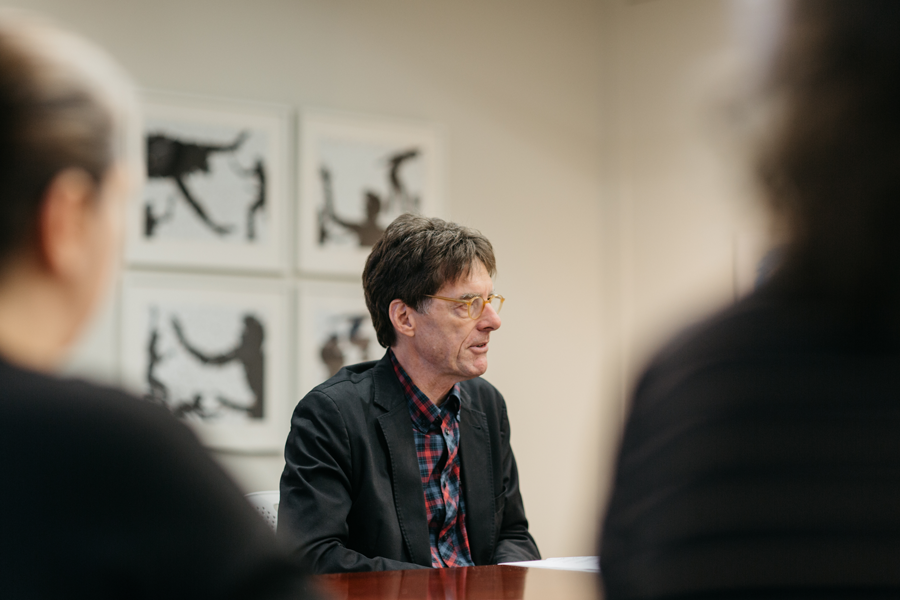
Jay Coogan has a lot of responsibility.
As the president of the Minneapolis College of Art and Design (MCAD), Jay leads about 800 students and over 100 faculty in one of the best art schools in the country. He’s more than qualified for the work. Jay was at the prestigious Rhode Island School of Design (RISD) for 25 years, three of which he was provost. During his time with RISD, he created a successful dual-degree program between RISD and Brown College, among other accomplishments. But what stands out from the Young Nonprofit Professionals Network of the Twin Cities’ Leadership Breakfast with Jay is his genuine passion for arts education, community, and the very people he’s leading.
We had a lively and candid discussion with Jay about issues surrounding higher education, and many of the topics discussed applied to all nonprofits. From fundraising to networking to the challenges and failures of leading a nonprofit, here is some of the wisdom Jay shared.
On networking and leading through partnership
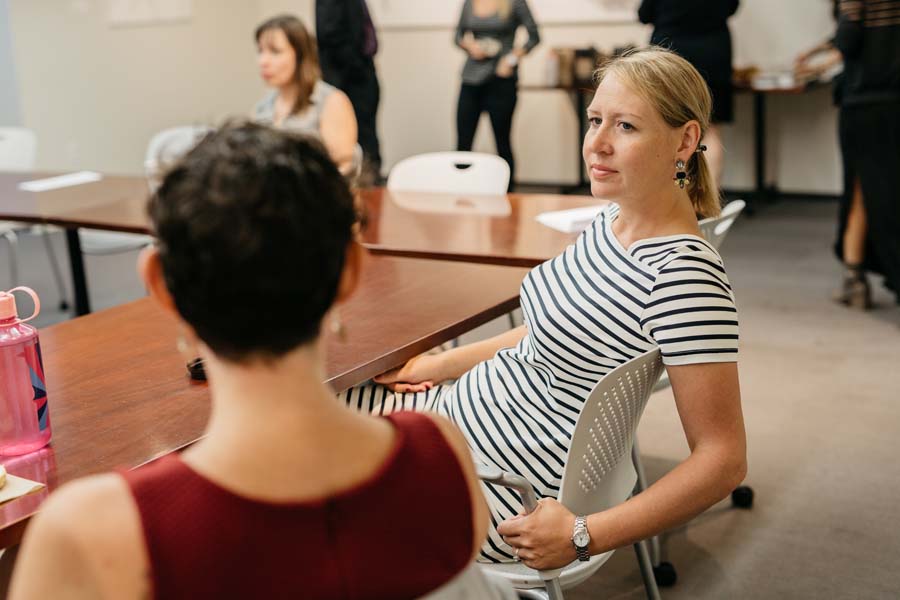
When Jay was part of the faculty at RISD, he looked for partnership opportunities based on mutual interests and benefits. He cautioned against paternalistic partnerships; they are problematic and not sustainable. For example, a large corporation could provide funding to the school, but is working within a limited frame of time and knowledge. Unlike a funding relationship with a peer organization or mission-aligned entity, a paternalistic partnership may bring in needed funds, but what’s often missing is any context or drive behind those funds. Shared learning, the exchange of ideas, and opportunities to collaborate aren’t always a priority, and the scope of work between funder and grantee could be mismatched. With this imbalance, the partnership ends at the exchange of financial support.
Similarly, Jay encouraged anyone in a position to lead to do so by bringing others along with them, rather than following a “tell them what to do” model. He recommended engaging in meaningful dialogue with those in your organization so you’re hearing all points of view; figuring out the capacities of your organization; living within that capacity; and working toward expanding it. And lastly, looking to bring diverse voices into the room (more on this in a minute).
On community engagement and fundraising
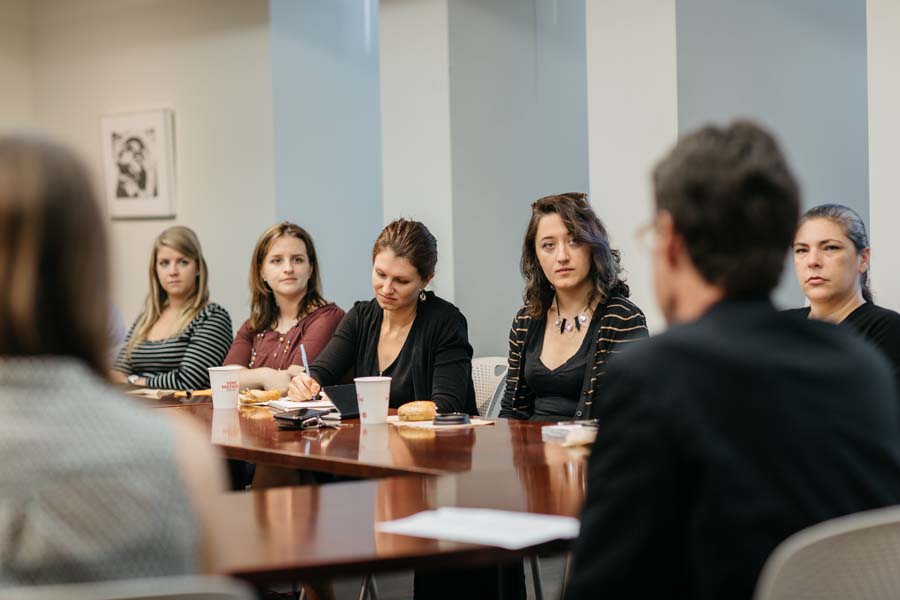
Jay is very interested in the Twin Cities arts community that MCAD calls home, and actively establishes ways for his students to interact with it. The fact that MCAD is a private school and a nonprofit makes visibility a challenge at times, and integrating with the community is a mutually beneficial way to create that visibility. Have you heard of the MCAD Art Sale? You very likely have. It’s an opportunity for very talented students to get their work to the community, and it’s also a strategic way for MCAD to remain visible.
Another plus to staying connected to the community: it gives you insight about who you should ask for money and when. Fundraising is a challenge, and Jay says that asking people for money is one of the hardest things to do. He knows that alumni one to five years out of school aren’t the ones to ask for financial contributions; they are likely paying off their own student loans. And likewise, Jay wants them to prioritize establishing themselves and their career. A holistic and personal approach is more authentic and eliminates some of the pain of asking for money. Best of all, it’s more effective in the long run. .
On diversity in education and nonprofits
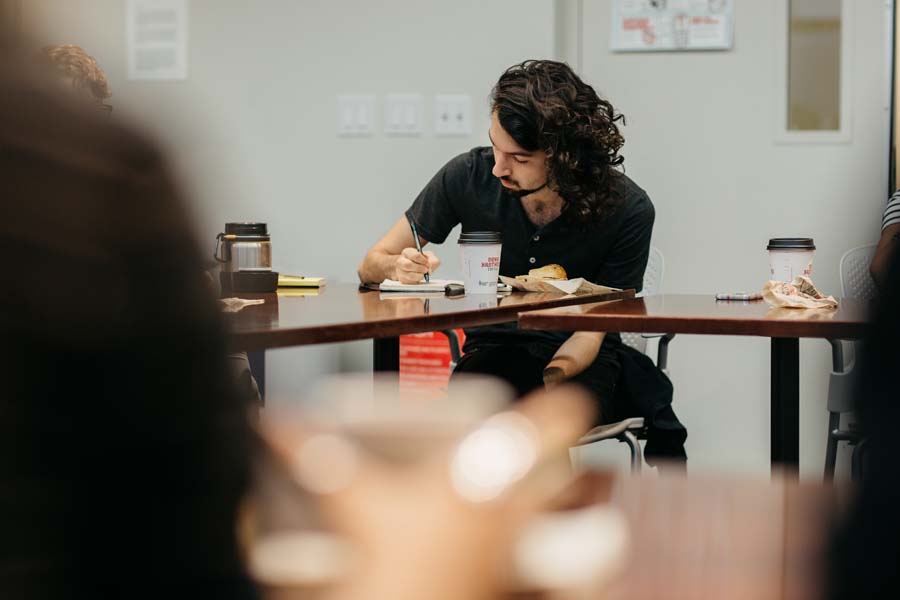
Since taking on the role of president in 2009, Jay has been working hard to bring diversity to the organization. It’s working. The percentage of students of color has gone from 11% when he started to 29% at present day, and a large percentage of the budget goes to financial aid, allowing wider access to MCAD’s education. But Jay continues to work on diversity and equity, counting raising money for scholarships as a goal, making sure the board is diverse, and pushing MCAD to do the same with its staff and students. When a diverse student body sees a reflection of themselves in a diverse staff, it opens a pathway for people of all backgrounds to confidently pursue a career in the art industry, whether at MCAD or elsewhere.
On art’s place in the world
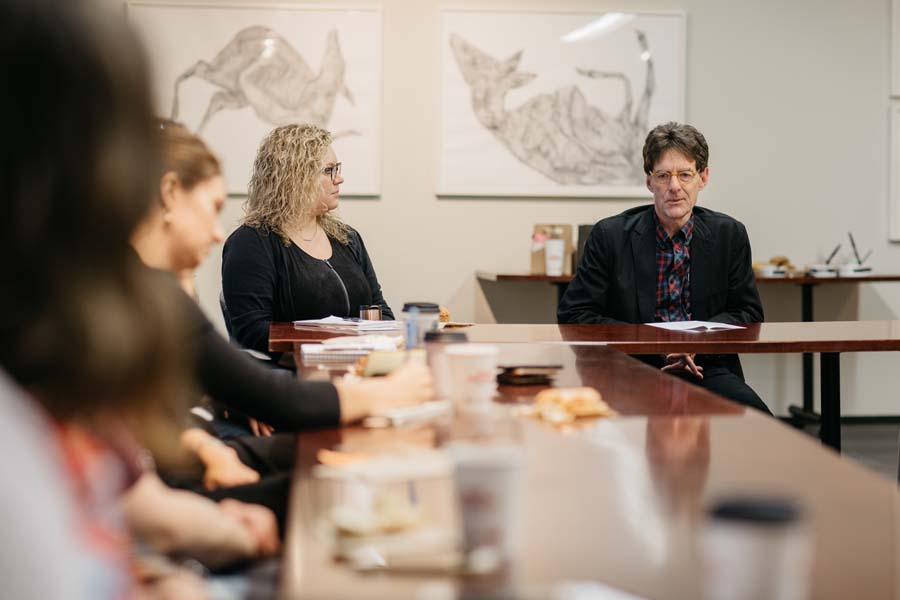
Jay says that one of the biggest challenges in his life was telling his father he was switching from political science and law to art while pursuing his college education. Art can have an unfair reputation as being irrelevant, but Jay has plenty of fodder for the argument that it’s not just relevant, but also critically important. He says it adds a lot to social and political dialogue, leaves enduring icons of a civilization, and whether we notice it or not, impacts everything around us. Everything man-made has been touched by an artist or designer in some way, and we owe a lot to those who have fashioned our world. Art creates beauty in our lives, is a form of recreation, and of self-reflection. (It’s not hard to see why Jay was attracted to the arts and arts education.)
Jay Coogan is the real deal. He’s genuinely interested in seeing the arts, his community, and his students and staff flourish. Of all the advice one could take away from his Leadership Breakfast, the overarching theme is his foundation of passion for the arts. That, combined with his leadership skills, both innate and learned, make him a solid role model for all of us in the nonprofit sector.
